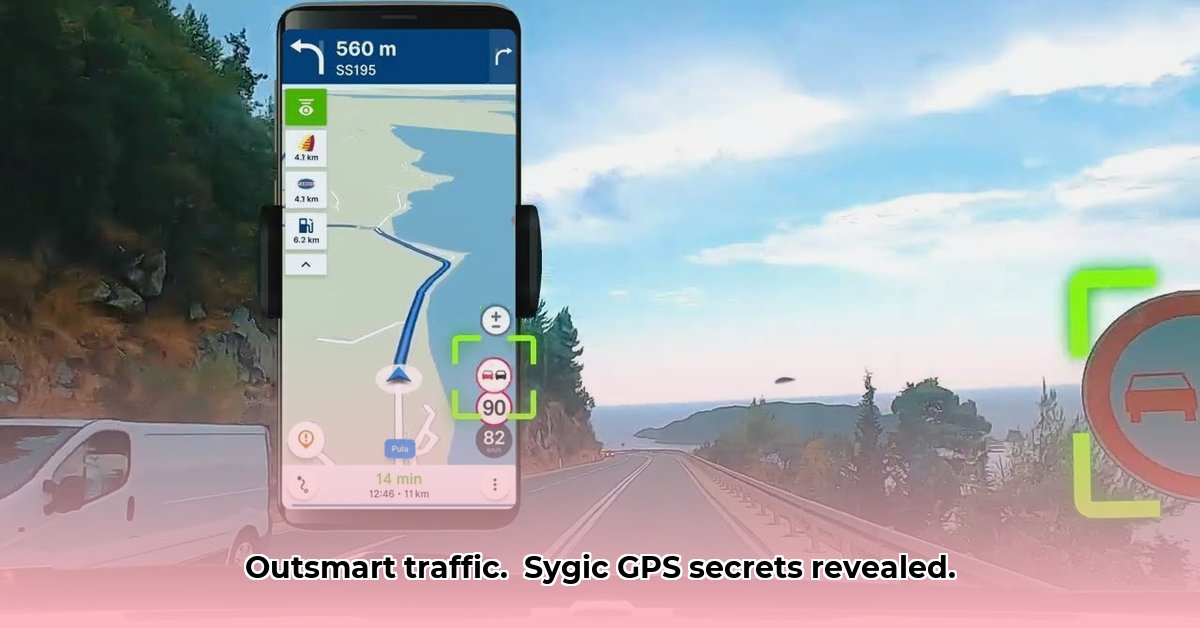
Traffic Sygic: Conquering the Daily Commute
Sygic's real-time traffic feature promises faster trips and reduced commute stress. But how well does it perform? This review analyzes its accuracy, data usage, cost, and overall effectiveness, providing a comprehensive assessment for potential users.
How Sygic's Traffic Data Works: A Network of Drivers
Sygic's traffic data leverages a vast network of drivers sharing their location data in real-time. This creates a dynamic, detailed road map constantly updating to reflect traffic conditions. Slowdowns, accidents, and roadblocks are instantly detected and displayed on the map using a color-coded system (green for clear roads, yellow for moderate congestion, red for severe congestion). This system, while straightforward, proves effective in many scenarios.
However, a crucial element missing from this analysis is a direct comparison to competing navigation apps. Further investigation is needed to determine how Sygic’s accuracy stacks up against Google Maps, Waze, and similar services.
Beyond the Colors: Features, Limitations, and the Fine Print
Sygic offers more than just color-coded traffic visualization; it actively reroutes users around congestion, potentially saving time and fuel. Speed camera alerts are also included (part of a premium subscription), although the accuracy of these alerts requires further evaluation through rigorous testing.
Real-time traffic data in Sygic is not free; it requires a premium subscription. While Sygic claims low data usage, the actual consumption varies depending on traffic conditions and map usage. This is a critical factor for users with limited data plans. Furthermore, the feature's availability is geographically limited, performing best in densely populated areas with many Sygic users.
Weighing the Pros and Cons: Is Sygic Right for You?
Pros:
- Potential Time Savings: Active rerouting around congestion can significantly reduce travel time.
- Intuitive Maps: The color-coded map is simple and easily understood.
- Speed Camera Alerts (Premium): The potential for avoiding speeding tickets is beneficial (accuracy requires further assessment).
Cons:
- Paid Subscription: Access to real-time traffic requires a paid subscription.
- Variable Data Consumption: Data usage can be unpredictable, potentially leading to overage charges.
- Regional Limitations: Real-time traffic functionality varies significantly depending on location.
- Unclear Accuracy: While anecdotally well-received, the accuracy compared to competitors lacks quantifiable data and requires further investigation.
Before You Hit the Road: A User Checklist
Before subscribing, consider these factors:
- Data Plan: Assess your cellular data allowance to avoid overage charges.
- Budget: Determine if the subscription cost justifies the potential time savings based on your driving habits.
- Regional Coverage: Verify that Sygic provides comprehensive real-time traffic coverage in your area.
The value proposition of Sygic’s real-time traffic depends heavily on individual driving patterns and geographic location.
Room for Improvement: Future Developments
Sygic could enhance user experience with: more transparent data usage information, comprehensive accuracy reporting, improved reliability in less densely populated areas, and flexible subscription options. Further comparative analysis against competitors would also significantly enhance the value of future reviews.
Assessing the Risks: A Quick Overview
| Feature | Risk Category | Likelihood | Impact | Mitigation Strategy |
|---|---|---|---|---|
| Data Accuracy | Data Integrity | Moderate | Moderate | Continuous data validation; user feedback integration. |
| Connectivity Dependence | Service Availability | High | High | Offline map options; improved error handling; service status communication. |
| Premium Subscription Model | User Acquisition | Moderate | Moderate | Free trials; tiered subscriptions; transparent pricing. |
| Regional Coverage Limitations | Market Penetration | Low | Moderate | Expansion to underserved regions; strategic partnerships. |
| Speed Camera Data Accuracy | Legal & Safety Concerns | Low | High | Continuous updates and validation; clear accuracy disclaimers. |
Sygic's real-time traffic offers valuable navigation assistance, but its effectiveness and value are context-dependent.
How to Minimize Sygic GPS Data Usage While Using Real-Time Traffic
Key Takeaways:
- Sygic’s real-time traffic, while beneficial, consumes significant data.
- Optimized settings minimize data usage without sacrificing core functionality.
- Offline maps are crucial for data-conscious users.
- Strategic data management is key to maximizing Sygic’s benefits.
Understanding Sygic's Data Consumption
Sygic uses data for map updates, real-time traffic information, and location tracking. Real-time traffic is particularly data-intensive, requiring constant data fetches for accurate routing.
Strategies for Minimizing Data Usage:
Prioritize Wi-Fi: Use Wi-Fi whenever possible for map and traffic data downloads. Pre-download maps before trips.
Utilize Data Saver Mode: Enable Sygic’s data saver mode to reduce the frequency of updates.
Download Offline Maps: Download maps of frequently traveled areas to avoid constant data downloads.
Control Background Updates: Adjust settings to limit unnecessary background activities.
Reduce Map Detail: Use lower-resolution maps when high detail is not crucial.
Use Alternative Methods (Occasionally): For short trips or when real-time traffic isn't essential, consider alternative navigation methods.
Sygic’s real-time traffic enhances navigation but comes with data usage implications. Employing these strategies facilitates a balance between functionality and data conservation. A future enhancement opportunity would be comparing Sygic's data consumption against competitors' to provide context for consumers.
⭐⭐⭐⭐☆ (4.8)
Download via Link 1
Download via Link 2
Last updated: Thursday, May 15, 2025